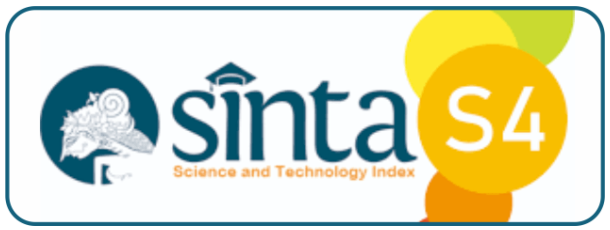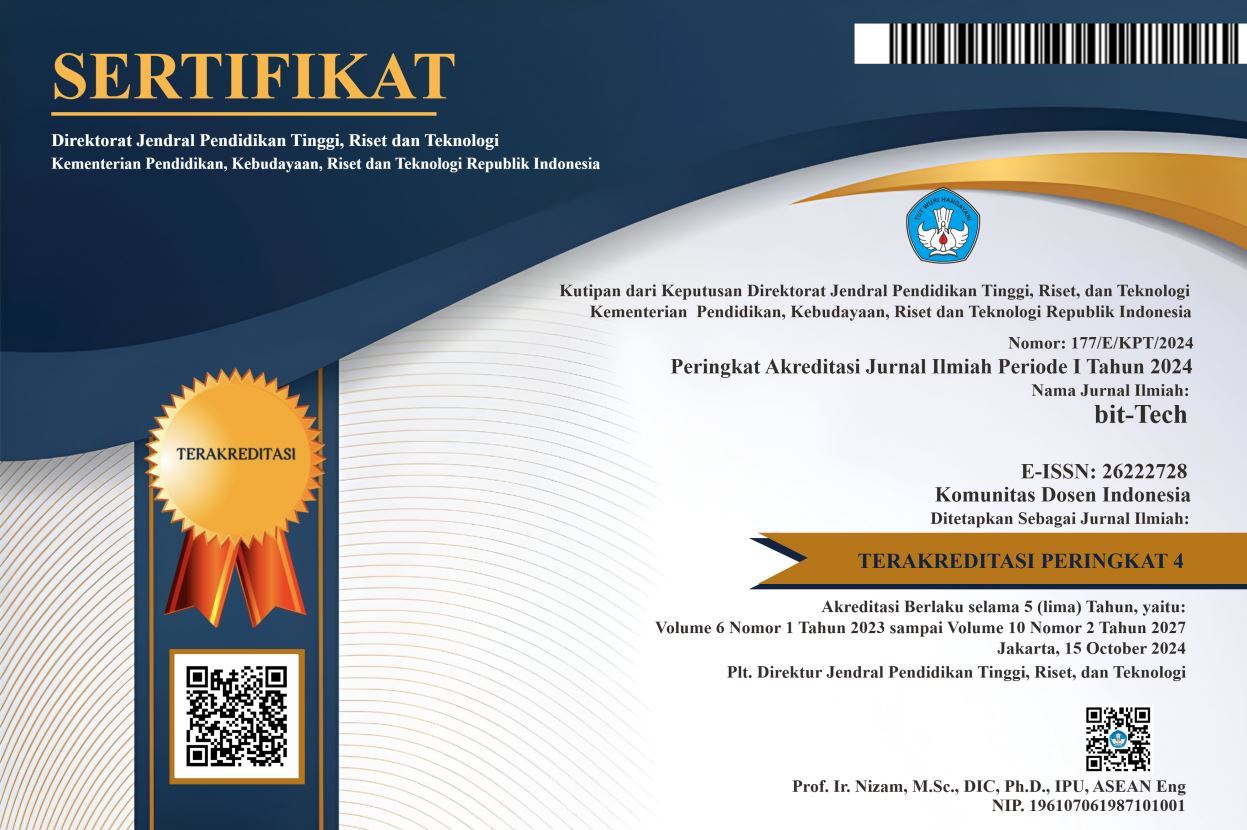Inventory Transaction Information System Audit Using Cobit 5
DOI:
https://doi.org/10.32877/bt.v7i1.1300
Keywords:
Audit, COBIT, DSS , Information System, MEA
Abstract
Information system audits have an important role in an organization, namely they can help identify security risks that may be faced by the company's information system and ensure that the company complies with applicable information security standards and regulations. The problem faced is that there is no framework for knowing the extent to which the system is working properly. In conducting an information system audit, instruments are needed in the form of frameworks, principles or standards that have been determined by competent organizations in their field. COBIT 5 is a framework in the form of a collection of best practices related to IT governance that can be applied in information audit activities. Implementing an information system audit using COBIT 5 is carried out by collecting control documents and aligning them with COBIT 5 basic practices, then conducting an assessment on each selected domain based on existing control documents. In this study, the domains chosen were DSS and MEA with subdomains consisting of DSS1, DSS2, DSS3, DSS4, DSS5, DSS6, MEA1, MEA2. The research results show that the inventory transaction information system is at level 1 (performed process), meaning that the process in each selected domain has been implemented and is in accordance with its objectives. These results can be a reference for improving the governance of inventory transaction applications in particular and IT governance in general so that they are in line with the company's business objectives.
Downloads
References
Wasilah, AUDIT SISTEM INFORMASI. Serang: CV. AA RIZKY, 2020.
I. Y. Sari et al., Keamanan Data dan Informasi. 2021.
E. Zuraidah, “Audit Tata Kelola Teknologi Informasi Menggunakan Framework COBIT 4.1 (Pada Studi Kasus PT Anugerah),” PROSISKO J. Pengemb. Ris. dan Obs. Sist. Komput., vol. 7, no. 2, pp. 84–95, 2020, doi: 10.30656/prosisko.v7i2.2289.
I. Riadi, I. T. R. Yanto, and E. Handoyo, “Analysis of academic service cybersecurity in university based on framework COBIT 5 using CMMI,” IOP Conf. Ser. Mater. Sci. Eng., vol. 821, no. 1, 2020, doi: 10.1088/1757-899X/821/1/012003.
S. D. Gantz, “The Basics of IT Audit: Purposes, Processes, and Practical Information,” Basics IT Audit Purp. Process. Pract. Inf., pp. 1–244, 2013, doi: 10.1016/C2013-0-06954-X.
M. S. B. Alvin A. Arens , Randal J. Elder, Auditing and Assurance Services:An Integrated Approach, 16th Edition. Boston:Pearson Education, 2017.
N. R. Nia and I. S. Rozas, “Statistik Penelitian Berbasis Kerangka Kerja Cobit, Itil, Dan Iso 27001 Di Indonesia,” J. Ilm. Teknol. Inf. dan Robot., vol. 2, no. 1, pp. 17–23, 2020, doi: 10.33005/jifti.v2i1.28.
D. Utomo, M. Wijaya, Suzanna, Efendi, and N. T. M. Sagala, “Leveraging COBIT 2019 to Implement IT Governance in SME Context: A Case Study of Higher Education in Campus A,” CommIT J., vol. 16, no. 2, pp. 129–141, 2022, doi: 10.21512/commit.v16i2.8172.
E. W. Kristianto, “Evaluasi Sistem Informasi menggunakan COBIT 5 (Studi Kasus: Perusahaan Mentari Primajayaabadi),” JATISI (Jurnal Tek. Inform. dan Sist. Informasi), vol. 9, no. 1, pp. 595–605, 2022, doi: 10.35957/jatisi.v9i1.1635.
A. P. Rabhani et al., “Audit Sistem Informasi Absensi Pada Kejaksaan Negeri Kota Bandung Menggunakan Framework Cobit 5,” J. Sisfokom (Sistem Inf. dan Komputer), vol. 9, no. 2, pp. 275–280, 2020, doi: 10.32736/sisfokom.v9i2.890.
D. A. O. Turang and M. C. Turang, “Analisis Audit Tata Kelola Keamanan Teknologi Informasi Menggunakan Framework Cobit 5 Pada Instansi X,” Klik - Kumpul. J. Ilmu Komput., vol. 7, no. 2, p. 130, 2020, doi: 10.20527/klik.v7i2.316.
B. T. Utomo and A. Tawakalni, “Audit Sistem Informasi Pelayanan Penggunaan Tenaga Kerja Asing Online Menggunakan Framework Itil V.3 Domain Service Operation (Studi Kasus:Pt. Seokhwa Indonesia),” J. Teknol. Inf. dan Komun., vol. 12, no. 1, 2022, doi: 10.56244/fiki.v12i1.497.
ISACA, COBIT 5:Enabling Process, Illionis. USA: Meadows, Rolling, 2012.
J. F. Andry, F. S. Lee, W. Darma, P. Rosadi, and R. Ekklesia, “Audit Sistem Informasi Menggunakan Cobit 5 Pada Perusahaan Penyedia Layanan Internet,” J. Ilm. Rekayasa dan Manaj. Sist. Inf., vol. 8, no. 1, p. 17, 2022, doi: 10.24014/rmsi.v8i1.14761.
E. Ekowansyah, Y. H. Chrisnanto, Puspita, and N. Sabrina, “Audit sistem informasi akademik menggunakan COBIT 5 di Universitas Jenderal Achmad Yani,” Pros. Semin. Nas. Komput. dan Inform., vol. 2017, pp. 201–205, 2017.
ISACA, COBIT 5: A Business Framework for the Governance and Management of Enterprise IT. 2012.
R. Nurul Wahidah, N. Lutfiyana, V. Fitria Ramadanti, P. Septiyo, and R. Drefiyanto, “Audit Sistem Informasi Absensi Mesin Fingerprint Pada PT. Metal Castindo Industritama Dengan Menggunakan Framework Cobit 5,” J. Sist. Inf., vol. 11, no. 2, pp. 51–57, 2022, doi: 10.51998/jsi.v11i2.482.
M. I. Santoso and E. Zuraidah, “Audit Sistem Informasi Aplikasi Absensi Pada Inl International Technology Menggunakan Framework Cobit 5,” JURIKOM (Jurnal Ris. Komputer), vol. 10, no. 1, pp. 39–45, 2023, doi: 10.30865/jurikom.v10i1.5420.
N. Lediwara, “Analisis IT Governance Menggunakan Framework Cobit 5 Domain DSS, MEA dan BAI,” Pseudocode, vol. 7, no. 2, pp. 97–104, 2020, doi: 10.33369/pseudocode.7.2.97-104.
Downloads
Published
How to Cite
Issue
Section
License
Copyright (c) 2024 bit-Tech

This work is licensed under a Creative Commons Attribution-ShareAlike 4.0 International License.
I hereby assign and transfer to bit-Tech all exclusive copyright ownership rights to the above work. This includes, but is not limited to, the right to publish, republish, downgrade, distribute, transmit, sell, or use the work and other related materials worldwide, in whole, or in part, in all languages, in electronic, printed, or any other form of media, now known or hereafter developed and reserves the right to permit or license a third party to do any of the above. I understand that this exclusive right will belong to bit-Tech from the date the article is accepted for publication. I also understand that bit-Tech, as the copyright owner, has sole authority to license and permit reproduction of the article. I understand that, except for copyright, any other proprietary rights associated with the work (e.g. patents or other rights to any process or procedure) must be retained by the author. In addition, I understand that bit-Tech permits authors to use their papers in any way permitted by the applied Creative Commons license.


 DOI :
DOI :
 Abstract views: 163
/
Abstract views: 163
/  PDF downloads: 122
PDF downloads: 122











